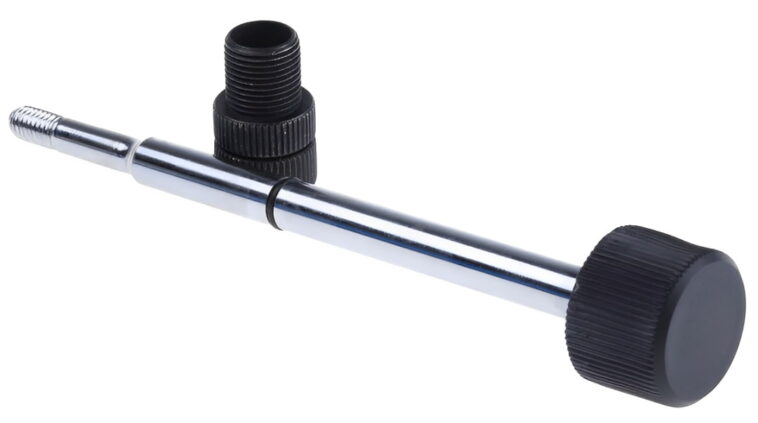Mandrels may be small in appearance, but their role in industrial and mechanical operations is anything but minor. Whether in machining, metalworking, jewellery making, or shaping composite materials, mandrels are vital tools that ensure precision, uniformity, and structural integrity in numerous applications. In this comprehensive post, we’ll explore what mandrels are, their types, functions, and significance across industries, helping you understand why they’re indispensable for many manufacturing processes.
Understanding Mandrels: The Foundation of Precision
At its core, a mandrel is a cylindrical or conically shaped tool used to support, shape, or hold materials during manufacturing. They are often used as a core around which materials like metal, wire, rubber, or plastic can be formed, shaped, machined, or wound. In rotating machinery or lathes, mandrels provide central support, ensuring the workpiece maintains alignment and balance throughout the production process.
Mandrels come in various shapes and sizes depending on the specific application. Their primary goal is to facilitate consistent results, minimize error, and maintain tight tolerances during operations—making them vital in industries that demand high precision.
The Key Roles Mandrels Play in Industry
Mandrels are versatile tools with a wide range of functionalities:
-
Support Workpieces: In machining, mandrels hold components securely to ensure accurate turning or milling.
-
Form Internal Dimensions: In tubing and pipe manufacturing, mandrels help shape and support the inner diameter during bending or forming.
-
Maintain Structure During Curing: In composite manufacturing, mandrels act as moulds around which materials are laid and cured to retain specific shapes.
-
Enable Repeatability: They ensure that products made in large volumes are consistent in size and shape.
-
Facilitate Safe Handling: In winding operations, mandrels provide a secure base to prevent damage to materials such as film, foil, or wires.
Common Types of Mandrels
Depending on their intended use, mandrels come in various forms. Below are some of the most commonly used types:
1. Expanding Mandrels
These mandrels expand to grip the internal diameter of a hollow part. They are ideal for precision machining, especially when the workpiece must be turned from the inside.
2. Solid Mandrels
Typically used in lathes, solid mandrels are basic cylindrical rods inserted into the centre of a component for turning or polishing. They provide strong support but require precise internal dimensions in the workpiece.
3. Tapered Mandrels
Used where the internal diameter slightly varies or where a friction fit is necessary. These mandrels rely on a taper to secure the component during turning or grinding.
4. Through-Hole Mandrels
These feature a hollow centre and are used in applications like winding or extrusion, allowing materials to pass through the mandrel during processing.
5. Composite or Custom Mandrels
Often used in aerospace and automotive industries, composite mandrels are tailored to specific shapes and are sometimes disposable after forming.
Key Industries and Applications of Mandrels
Mandrels are used in diverse fields ranging from aerospace engineering to jewellery making. Let’s explore some of the notable sectors where mandrels are indispensable.
• Aerospace and Automotive
Mandrels are used to form lightweight composite parts such as ducts, tubes, and aerodynamic panels. Their ability to withstand high temperatures during the curing process makes them essential in these high-performance industries.
• Metalworking and Machining
In turning operations, mandrels hold parts tightly and centrally, allowing for precise external machining. They are also used in boring, drilling, and grinding processes to maintain symmetry and accuracy.
• Pipe and Tube Manufacturing
Mandrels are crucial when bending pipes or tubes, as they prevent the walls from collapsing or wrinkling during the process. This ensures both structural strength and aesthetic finish.
• Textile and Film Industries
Here, mandrels act as cores for winding films, foils, fabrics, or threads. They ensure even tension and prevent creasing or tearing during high-speed operations.
• Jewellery Making and Crafting
Mandrels are used to shape rings, bracelets, and wires into accurate, repeatable sizes. They serve both as forming tools and measuring guides.
Benefits of Using Mandrels
Using mandrels provides a host of advantages in industrial and artisan applications alike:
-
Enhanced Precision: Mandrels ensure accurate alignment of workpieces, reducing the chances of dimensional errors.
-
Improved Efficiency: By securely holding materials in place, they speed up the production process and minimise waste.
-
Versatility: Available in a wide range of sizes, materials, and styles, mandrels are adaptable to multiple industries.
-
Cost Savings: Preventing structural deformation reduces rework, thus lowering manufacturing costs.
-
Consistency: Mandrels enable high-volume production of parts with consistent dimensions and quality.
Material Choices for Mandrels
The effectiveness of a mandrel often depends on the material it’s made from. Common materials include:
-
Steel: Durable and suitable for most machining and metal forming tasks.
-
Aluminium: Lightweight and corrosion-resistant, ideal for moderate-use cases.
-
Plastic or Nylon: Used in low-friction applications or where non-marking is required.
-
Composite Materials: Designed for high-temperature applications such as composite curing in aerospace.
Choosing the right material is crucial, as it affects both the performance and longevity of the mandrel in specific environments.
Final Thoughts
Mandrels are the hidden heroes behind countless precision-based processes in today’s industrial world. Whether you’re shaping composite structures for aerospace or crafting a silver ring, the proper mandrel can make all the difference in terms of quality, efficiency, and performance. As manufacturing continues to evolve, mandrels will remain integral to achieving accuracy and reliability in every operation.
This post was created with our nice and easy submission form. Create your post!





